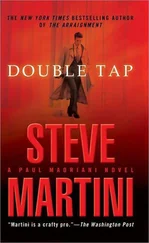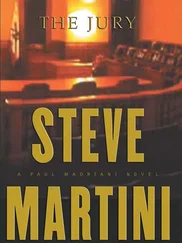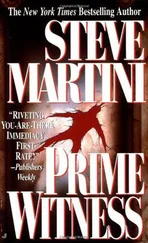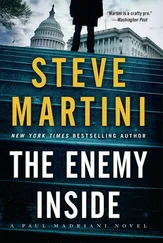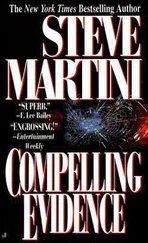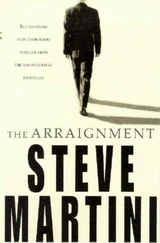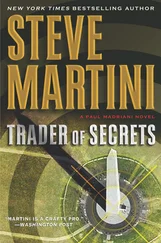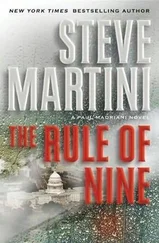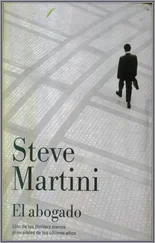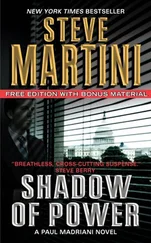Steve Martini - Undue Influence
Здесь есть возможность читать онлайн «Steve Martini - Undue Influence» весь текст электронной книги совершенно бесплатно (целиком полную версию без сокращений). В некоторых случаях можно слушать аудио, скачать через торрент в формате fb2 и присутствует краткое содержание. Год выпуска: 1995, ISBN: 1995, Издательство: Penguin Group US, Жанр: Триллер, на английском языке. Описание произведения, (предисловие) а так же отзывы посетителей доступны на портале библиотеки ЛибКат.
- Название:Undue Influence
- Автор:
- Издательство:Penguin Group US
- Жанр:
- Год:1995
- ISBN:9781101563922
- Рейтинг книги:3 / 5. Голосов: 1
-
Избранное:Добавить в избранное
- Отзывы:
-
Ваша оценка:
- 60
- 1
- 2
- 3
- 4
- 5
Undue Influence: краткое содержание, описание и аннотация
Предлагаем к чтению аннотацию, описание, краткое содержание или предисловие (зависит от того, что написал сам автор книги «Undue Influence»). Если вы не нашли необходимую информацию о книге — напишите в комментариях, мы постараемся отыскать её.
Undue Influence — читать онлайн бесплатно полную книгу (весь текст) целиком
Ниже представлен текст книги, разбитый по страницам. Система сохранения места последней прочитанной страницы, позволяет с удобством читать онлайн бесплатно книгу «Undue Influence», без необходимости каждый раз заново искать на чём Вы остановились. Поставьте закладку, и сможете в любой момент перейти на страницу, на которой закончили чтение.
Интервал:
Закладка:
There’s a few smiles in the jury box.
‘I’d take book,’ he says. ‘The rest of that bullet got itself lost somewhere inside the victim,’ he tells her.
‘You mean fragments that dislodged?’ says Cassidy.
‘Yeah.’
Watching them work together, Nico and Morgan, is an experiment in chemistry. Nico has never come across as professional. He has all the polish of a cast-off pair of shoes on the feet of some vagrant.
‘Besides its caliber, can you tell the jury what kind of bullet this is, what it’s made of?’ she says.
‘A lead alloy,’ he tells her. ‘That’s what is known as a lead hollow-point. That particular kind of bullet comes in three types,’ he says, ‘lead hollow-point, lead with a partial steel jacket, and a fully jacketed round. A jacket means the lead in the bullet is either partially or fully covered in a steel outer casing,’ he says.
‘What’s the difference in performance?’ says Cassidy.
‘Lead and partial-jacket have a tendency to jam, but they got more stopping power. Full jacket works smoothly through the action of the firearm, don’t jam as much, but it don’t spread either. Less stopping power. The lead, when it hits something hard, tends to spread. You can see on this one we got a little mushroom.’ Nico’s holding the bag with the bullet in his hand now.
‘A mushroom?’ says Cassidy.
‘Yeah. You can see where the bullet hit something, probably bone, and ballooned out at the tip.’ He points with his thumbnail.
‘See? Right there,’ he says.
‘And this would cause more damage?’
‘You bet. If a bullet spreads, it transfers more kinetic energy to the target. That causes more damage. What shooters call stopping power.’
‘Would you consider this a pretty deadly round?’
‘Sure. At close range it’s real effective. What many police agencies use today, though most of their bullets are jacketed.’
‘So in your professional opinion the bullet in this bag has more stopping power than bullets used in standard-issue police weapons of the same caliber?’
‘Oh, yeah. Whoever used this one was looking to do a number,’ he says.
‘Objection.’
‘Sustained. Just answer the questions,’ says Woodruff.
Cassidy moves away for a moment to regroup. This gives Nico a chance to wet his coatsleeve to the elbow.
‘Let me ask you, Mr. Perone, did you have occasion to perform any kind of microscopic examination of the bullet in that bag?’
‘I did.’
‘And what did you find?’
‘The lands and grooves, the marks left on the bullet from the barrel of the firearm, indicated a right-hand twist. Pretty common for many types of manufactured handguns.’
‘Anything else?’
‘Yeah. There was something wrong with the gun. Besides the lands and grooves, there were little ridges cut in the sides of the bullet, some kind of a defect in the bore of the weapon.’
‘Could you tell what caused this?’
He makes a face and shakes his head. ‘If I had to guess — ’
‘No guessing. Your professional opinion,’ she says.
‘Sure. My professional opinion. I would guess maybe some oxidation in the barrel. Little pits of rust,’ he says. ‘Sometimes these cause little microscopic ridges that drag on the bullet as it runs down the barrel.’
Cassidy’s giving him slow nods on all of this. Her task here is not to score any particular points. A bullet is a bullet. This particular one happened to kill Melanie Vega.
Instead Morgan’s role is to account for any anomalies in the evidence, to raise any possible inconsistencies before we can, and to resolve them as nothing unusual, to steal any wind we might try to use to puff up the sails of our case, to prevent us from making our own theory of what happened seem more plausible than hers.
She moves to the evidence cart and comes back with another little bag, this one containing the brass cartridge found on the floor at the scene.
‘Mr. Perone, I would ask you to look at the bullet casing in this bag and ask if you’ve had an opportunity to examine it.’
He turns the bag over, studies it for a moment.
‘Yeah. I have.’
‘Can you tell us what caliber it is?’
‘It’s a nine-millimeter Luger.’
‘The same as the bullet in the other bag?’
‘That’s right.’
‘Is there any way that you can tell whether this bullet and this cartridge were at one time part of the same loaded or complete bullet?’
‘Very difficult,’ he says. ‘Particularly with a nine-millimeter parabellum. Because they don’t generally crimp the round when they load ’em.’
‘What do you mean by “crimp the round”?’
‘When you load a cartridge, the last step in the process is called seating the bullet. This can be done manually, with a loading press, or by a machine in a plant. Either way, when the bullet is seated, the die, the part that presses it into the cartridge casing, either crimps the edge of the casing a little around the bullet to hold it or it doesn’t. On the nine-millimeter most dies don’t crimp.’
‘Why is that significant?’
‘If the casing is crimped, it’s difficult, but there’s a chance that you can match up irregularities around the mouth of the casing with impressions left on the bullet where it’s crimped. If it ain’t crimped you can forget it.’
‘And this one?’
‘You can forget it.’
‘So there’s no way you can tell us whether this bullet and this cartridge were part of the same complete unfired bullet at one point?’
‘I can’t.’
‘Let’s turn our attention to the cartridge casing,’ she says. ‘Is there anything you can tell us about this casing?’
‘It’s a reload,’ he says.
‘What does that mean?’
‘It means the cartridge has been fired and reloaded — in the case of that one, many times.’
‘How can you tell this?’
‘Tool marks on the rim for one thing. A semiautomatic pistol — that bullet is generally fired from a semiautomatic — ’ discharges the casing after it’s fired. It ejects it from an ejection port, an opening in the side or the top of the firearm. To do that, an ejector has to grip the rim of the empty cartridge and pull it out of the chamber. This leaves little tool marks on the rim.’
‘How many tool marks did you find on the cartridge in question?’
‘At least eight that I could identify.’
‘Would this mean that the bullet was reloaded at least eight times?’
‘Not necessarily. Some of them could have been caused by whackin’ off.’
Cassidy looks at him like maybe she hasn’t heard him right. Harry starts to snigger. Cassidy shoots him a glance, and Hinds coughs to cover up.
‘Manual ejection,’ he says. ‘You put the bullet in the magazine, maybe with others, and then manually you work the bolt or the return back and forth, seating the bullets in the chamber and ejecting them one at time, without firing. Sometimes people do this to make sure a gun won’t jam when they go to fire it. In the trade, some people call it whackin’ off.’
‘No need to explain,’ she tells him.
Knowing Nico, he might show the jury.
‘But how do you know that all the tool marks on this casing weren’t caused by manual ejection?’
‘Because there’s other marks that tell us it’s a reload.’
‘What kind of marks?’
‘There’s stress and metal fatigue that you can see under a microscope, and what we call sizing marks, along the side of the cartridge. Bullet casings are usually made of brass or some other soft metal. They tend to expand when fired. Once they’re ejected, you ain’t gonna get ’em back into the chamber of the weapon unless you first put ’em in a sizing die and press them back down to size. When you do this, to reload the round, it leaves stress marks on the cartridge. Also, the end of the casing, the part that hits up against the breechblock, will start to show wear after it’s been fired a few times. On this one you can barely read the word Luger.’
Читать дальшеИнтервал:
Закладка:
Похожие книги на «Undue Influence»
Представляем Вашему вниманию похожие книги на «Undue Influence» списком для выбора. Мы отобрали схожую по названию и смыслу литературу в надежде предоставить читателям больше вариантов отыскать новые, интересные, ещё непрочитанные произведения.
Обсуждение, отзывы о книге «Undue Influence» и просто собственные мнения читателей. Оставьте ваши комментарии, напишите, что Вы думаете о произведении, его смысле или главных героях. Укажите что конкретно понравилось, а что нет, и почему Вы так считаете.

